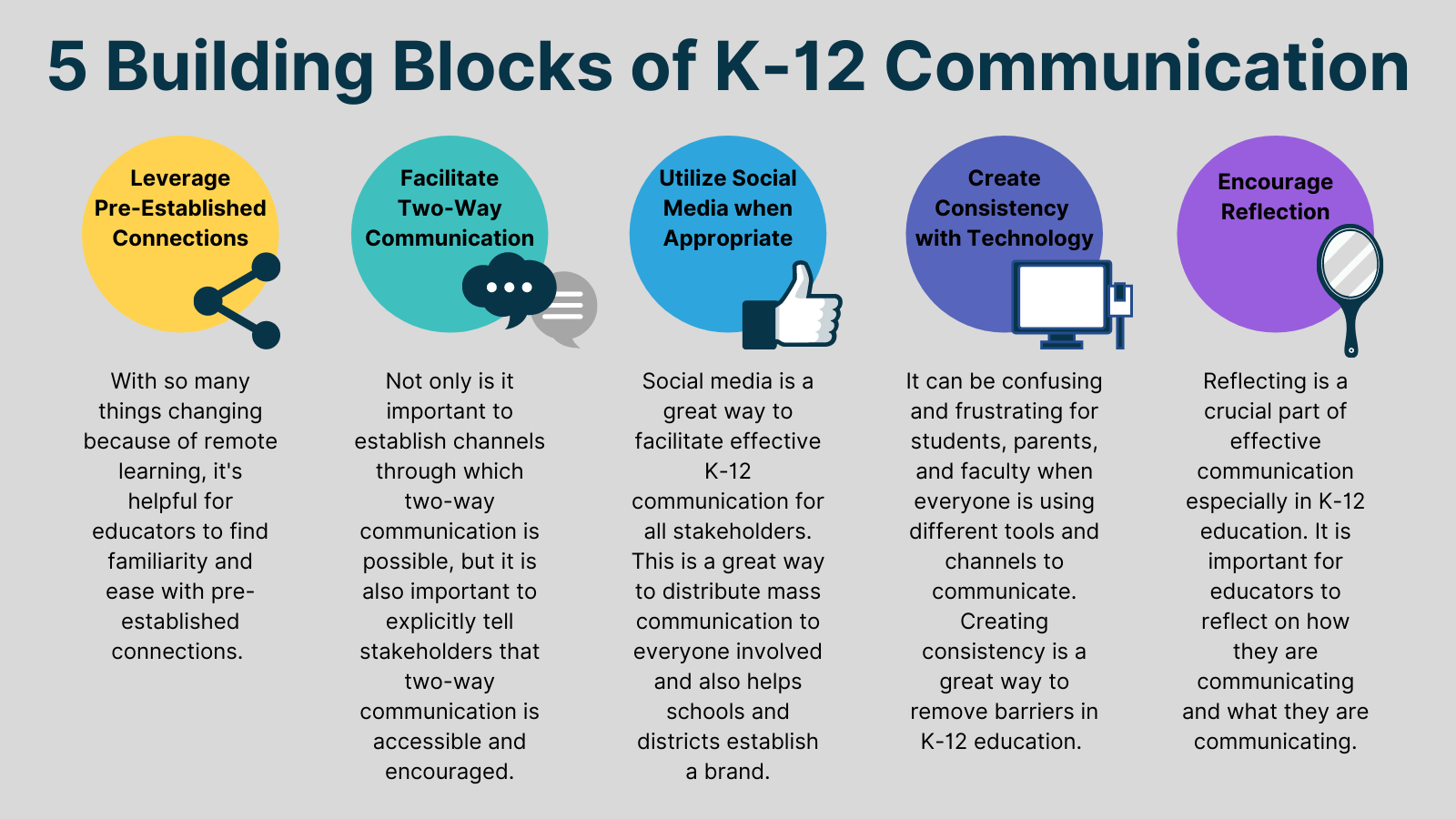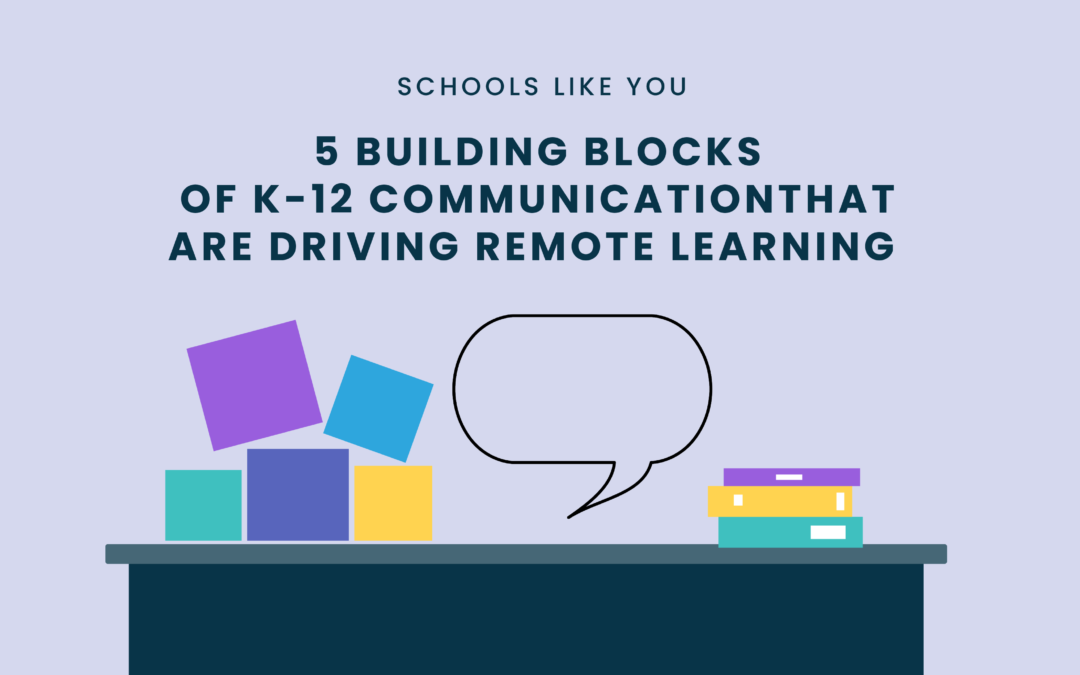Communication and collaboration have never been more important to K-12 education with the onset of remote learning and continuation of instruction in remote and hybrid environments.
Since administrators, teachers, and students are no longer all in the same place, it has become critical to streamlining communication to make learning and collaboration effective. Recently we sat down with Monica Burns on the Tackling Tech Podcast to learn what the most important building blocks are for successful K-12 communication.
5 Building Blocks of K-12 Communication
Although schools are dealing with new changes and challenges, Monica shared that educators are identifying and leaning on pre-existing building blocks to drive effective communication.
1. Leverage Pre-Established Connections
With so many things changing because of remote learning, it’s helpful for educators to find familiarity and ease with pre-established connections. This applies to both connections with colleagues, students, and families, and also connections that are made through technology tools. Effective communication is familiar and consistent, so educators should prioritize leveraging existing channels consistently for all stakeholders to feel at ease with remote learning.
2. Facilitate Two-Way Communication
In our conversation, Monica shared how important it is for K-12 communication to go both ways. Not only is it important to establish channels through which two-way communication is possible, but it is also important to explicitly tell stakeholders that two-way communication is accessible and encouraged. Rather than sending mass emails where the reply-to address is not a human, make sure that if parents, students, or faculty reply to an email they know they will get an answer. Similarly, open two-way communication channels on social media platforms so that communication is accessible from anywhere.
Monica encourages all faculty members to include their Calendly link, email address, and phone number in their email signature so it is clear that two-way communication is encouraged.
3. Utilize Social Media when Appropriate
Social media is a great way to facilitate effective K-12 communication for all stakeholders. Monica encourages educators to make announcements and promote events on social media platforms rather than sending out an email blast. This is a great way to distribute mass communication to everyone involved and also helps schools and districts establish a brand. Make sure you identify which channels are popular with your different stakeholders. For example, teachers and faculty might be more likely to use Twitter and Instagram, whereas parents might get more information on Instagram and Facebook.
4. Create Consistency with Technology
A great way to remove barriers and confusion with K-12 communication is to make sure there is consistency with the technology that is used to communicate. It can be confusing and frustrating for students, parents, and faculty when everyone is using different tools and channels to communicate. Some teachers might send updates through their LMS while others might communicate via email or send home packets. It’s helpful for schools to get on the same page about how and where they will communicate different kinds of information and ensure that all stakeholders have access to those communication channels.
5. Encourage Reflection
Reflecting is a crucial part of effective communication especially in K-12 education. Monica shared that it is important for educators to reflect on how they are communicating and what they are communicating to understand what’s working and what’s not working. She also shared that during this time of remote learning it is important for educators to reflect on what has been effective and what has not been as effective and communicate that information back to all stakeholders. This open and upfront communication and reflection helps everyone, including students and parents, maintain awareness of the reflection and participate in reflecting.

Regardless of which communication channels your school prioritizes or how communication has been impacted by remote learning, these five building blocks of communication are essential to making K-12 communication effective during unprecedented times.
Listen to our full conversation with Monica Burns
On this episode of Tackling Tech Podcast, Brett McGrath speaks to Dr. Monica Burns, ed-tech and curriculum consultant, author, and former NYC public school teacher. Monica usually travels across the country to schools to help them integrate technology in a meaningful and sustainable way. Since the quick shift over to remote learning, she shares her observations of K-12 schools during this difficult time.
Start teaching confidently with Dyknow for free!
Latest blog articles

Dyknow 2021 Year In Review
In addition to web browser updates and bug fixes, Dyknow released several major product updates, new features and enhancements. Check out Dyknow’s 2021 Year in Review!

The Classroom Management Tool that’s Rated #1 in Satisfaction on G2
K-12 Administrators across the world trust G2 as the #1 platform to find, research, and choose EdTech tools that solve the most pressing problems their teachers are experiencing. In G2's Fall 2021 Reports, Dyknow was once again rated #1 in overall Satisfaction out of...

Bringing Diversity and EdTech to the English Classroom
On this episode of Tackling Tech, Tierra Leustig interviews Scott Bayer about being an anti-racist teacher, diversifying reading lists, creating inclusive learning environments, and leveraging ed-tech in non-technical ELA classrooms. Scott Bayer is a High School...

